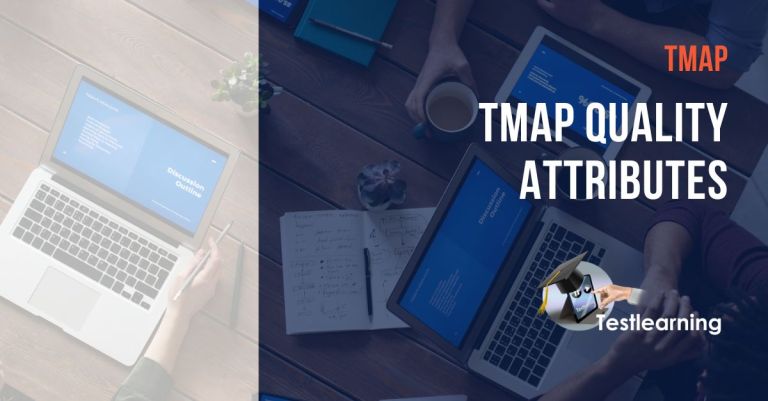
TMap quality attributes: what are they and how do you use them?
To measure if the quality of software is properly tested and working, it is important to use the same terms. That way everyone knows what it's about, simple right? Similarly to the TMap quality attributes, which is a framework for mapping the quality of a software system.
What are TMap quality attributes?
TMap quality attributes are a framework for understanding and measuring the quality of software systems. The framework consists of these different categories, each of which we explain below.
- Manageability
- Security
- Continuity
- Functionality - overarching
- Functionality - detail
- Functionality - validations
- Usability
- Infrastructure (suitability for)
- Compatibility
- Performance
- Portability
- Economy
Manageability
The manageability quality attribute refers to the extent to which a system can be installed correctly, consistently and with little effort.
Security
This quality attribute focuses on a system's ability to protect it from unauthorized access, use or modification.
Continuity
The continuity quality attribute is the extent to which a system can remain available during and after an emergency. This means that it can be restarted within a reasonable time after serious problems have occurred. Continuity can be broken down into the following five elements:
- Reliability: to what extent can data processing remain free of failures?
- Robustness: to what extent can information processing continue after the failure is resolved?
- Recoverability: with what ease and speed can the information facility be recovered after a failure?
- Degradability: with what ease can the core information provisioning continue after a portion is down?
- Degradation capability: how easily can information provisioning be continued at another location?
Functionality-overarching
The quality characteristic functionality-overarching encompasses all the other functional quality characteristics. It is the extent to which the system provides services that meet specified requirements.
Functionality - Detail
This is about the extent to which a system delivers services that meet specified requirements in terms of accuracy, completeness, timeliness and consistency.
Functionality -Validations
This attribute includes the extent to which a system performs validations on input data to ensure that it is correct, complete and within the expected range.
Usability
By usability, we mean the ease with which the system can be used by end users.
Infrastructure (Suitability for)
The infrastructure quality attribute tests the extent to which the system can be used in its intended environment without modification.
Compatibility
Compatibility refers to the degree to which manual procedures and automated information systems fit together and whether these methods are workable for the business.
Performance
Performance refers to the extent to which a system meets specified response time objectives under normal conditions. It refers to the speed at which the information system handles interactive and batch transactions.
Portability
This quality characteristic deals with the extent to which a system can be transferred from one environment to another with little or no change.
Economy
This attribute looks at the relationship between the performance level of the system and the amount of resources used for it. The performance level in this case is then indicated in transaction volume and overall speed.
Why use these attributes?
So there are many different aspects involved in ensuring software quality. TMap quality attributes provide a comprehensive framework for thinking about and measuring software quality. By understanding and using this framework, you can ensure that your software is of the highest possible quality.
What are some ways to use TMap quality attributes?
There are several ways to use the quality attributes in practice.The first way speaks for itself.
- Assessing for quality - You can use the attributes to assess created software for quality;
- Develop software - You can also use them to guide the development of new software;
- Find out errors - You can use the criteria to find out any errors in the software;
- Identify software quality requirements - You can use the attributes to identify what quality requirements are for your software;
- Assess different software options- Do you have different options for software lying around? Then of course you can use the attributes to assess which option fits best.
Tips for use
- Make sure you have a good understanding of the different types of quality attributes;
- Consider which quality attributes are most important for your software and project;
- Use the framework to assess the quality of your software at different stages of development;
- Communicate your quality requirements and used attributes used to others involved in the project.
Conclusion -TMap quality attributes
TMap quality attributes are a valuable tool for ensuring software quality. By using them to assess the quality of your software, you can ensure that your software is of the highest possible quality.Want to learn more about this? Then taking a TMap course is an option.
Want to know more about Testlearning?
Would you like to be kept up to date with developments around our test training courses? Then follow us on LinkedIn, sign up for the monthly newsletter or read our blogs!
